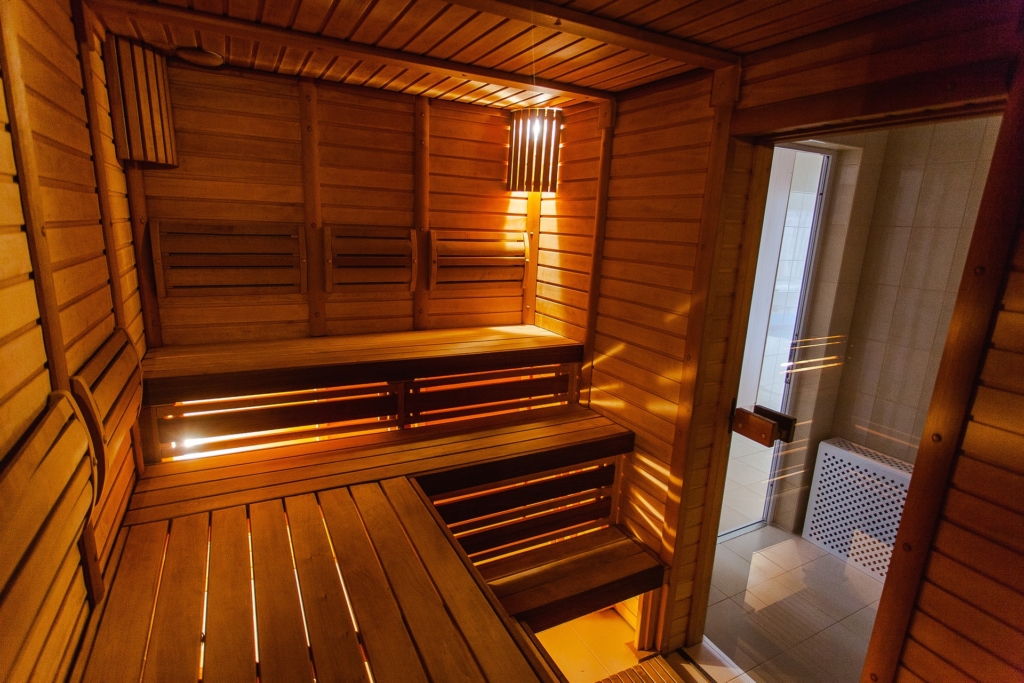Tenet 6.5: Health 3.0 is Antifragile – Hormesis in Health Care.

There is nothing more Finnish than a sauna.
There is nothing less Finnish than me.
But I’ve become fascinated with the sauna. I haven’t been in one yet. But it’s calling to me.
Explain sauna to a guy living in south India, and he may think you’re nuts. He lives in a sauna.
So what’s gotten into me? One word. Hormesis.
Hormesis, a concept first described in pharmacology, is the finding that a substance that in large doses would be harmful to an organism, is in small doses actually beneficial to the organism.
Remember the antifragile behavior of our muscles in response to lifting heavier weights? This is a prime example of hormesis. We tear muscle fibers in response to lifting the weight. During recovery, our muscles adapt to the stress through repair and hypertrophy. If the weight we lift is too much, we’ll pull a muscle and be out of commission for a while.
Same thing with the sauna. The intermittent heat stress causes us to adapt. We express more heat shock proteins, which serve as antioxidants and repair damaged proteins. We release a massive amount of growth hormone. And we improve insulin sensitivity, which also builds protein.
So if we can take the heat (in doses that won’t kill us!), we not only stay resilient. We get stronger.
Modern medicine doesn’t allow much for hormesis. We aim for comfort in medicine. And then we lament when we break down with age. We inappropriately attribute the breakdown to age itself. But (again, up to a certain point) it’s not age that’s slowing us down – it’s the accumulation of habits of comfort over time. Habits that don’t tap into hormesis.
There is an epidemic of narcotic use in American society. Our medical profession has helped enable it. And what’s fed it is our increasing allergy to pain. But as author Marc Gafni relates, the opposite of pleasure isn’t pain. Built into pleasure is always an element of tension and pain. The opposite of pleasure is comfort.
Nobody in the health care profession wants to see people suffer from excessive pain. But we’re medicating people to be comfortably numb. And in not allowing small doses of pain to strengthen our patients, we’re denying them the very pleasure of good health that we would want them to enjoy.
Anti-depressants for major depression can be a lifesaver. But some of the greatest works of art, music, and literature have been gifted to us through hormetic doses of melancholy. And great contributions have also been made by people who fit current criteria for attention deficit disorder and would be medicated for it.
Another illustration of hormesis: We’ve seen a rise in autoimmune diseases in the industrialized world. The hygiene hypothesis attributes this to the lack of exposure in early childhood to microorganisms that help us develop immune tolerance. In other words, we’re growing up too clean.
Health 3.0 would employ hormesis in its care. Taleb explains that we pick up a foreign language fastest when we’re abroad and thrown into situational difficulties. In such circumstances, we have little choice but to learn faster by getting over making mistakes and communicating. Similarly, Health 3.0 recognizes that we understand better and better about how to take care of ourselves through experiencing health stressors that ultimately don’t destroy us.
It’s like a sailboat moving headwind to get from point A to point B. It doesn’t get there in a straight line – it uses the wind to tack from one side to the other. In effect, the boat is consciously going off course to stay on course.
Taleb talks about hormesis not just at the individual but also at the collective level. He sees evolution as the process of hormesis on populations. At the expense of the more fragile individuals succumbing to stressors, the collective as a whole becomes more antifragile.
In the same vein, Health 3.0 will evolve as more fragile healthcare practices fail.
If this sounds disconcerting from the point of view of an individual practice, it is.
But entrepreneurship is the engine of evolution. And in entrepreneurship, things fail.
What we have currently in the practice of medicine is a dearth of entrepreneurship, in its truest form. A practice can deliver substandard health care and dubious value in Health 1.0. But it can still survive – no, even thrive – through cronyism and churning the healthcare wheel.
In Health 2.0, volume is being ostensibly replaced with value. But the cronyism hasn’t gone away. Medical practices aren’t truly competing and collaborating with each other to allow the best ideas to flourish. And without hormesis, the health care system as a collective becomes more fragile.
Health 2.0 is supposed to champion the collective. To do that, it needs to sweat in the sauna of Health 3.0.

And I love hormesis.
Nice writing.
Your friend,
Judy
Thanks, Judy.
Dr. J:
Nice article on saunas! I am going to check it out to see if it help my pneumonia.
Can you comment of cryotherapy?
William Teh
It has its merits too. Check out Wim Hof. I jump in a cold shower every morning for about 30 seconds.
Thank you for challenging us to move out of our comfort zones. Ready for the sauna!
Very interesting perspective and timely as I was just researching infrared light therapy, which appears to have certain common attributes to traditional saunas. If by chance you have any thoughts on infrared light therapy or other “self help” options (excluding the typical examples of exercising, eating right, etc. which are obvious), I’d love to hear your thoughts on them. Perhaps, this could be part of your future postings?
Best regards,
Chris
Sure, Chris. This is from Rhonda Patrick:
Check out her series on saunas on her YouTube channel, FoundMyFitness.
Another good article. Thank you.